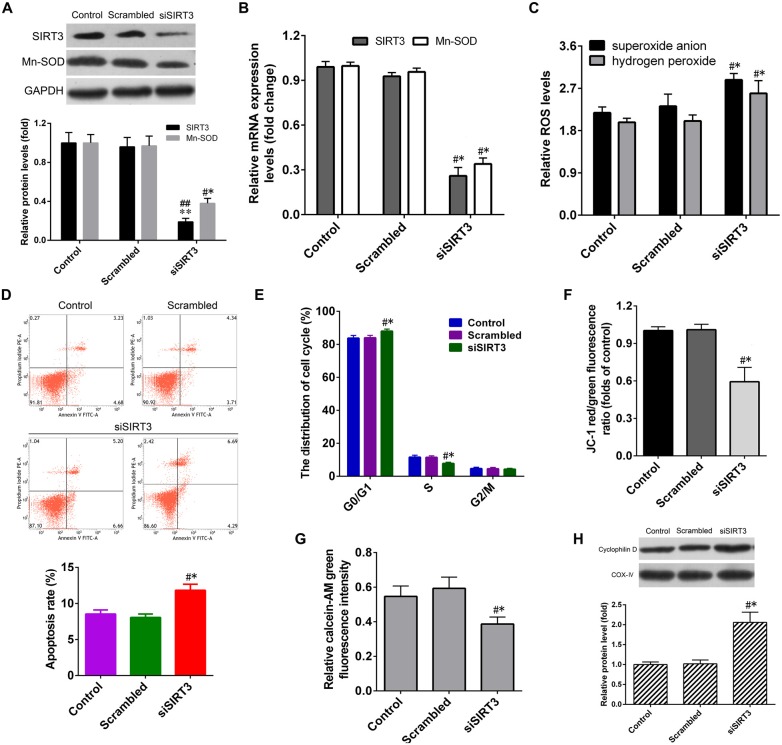Figure 3.
SIRT3 knockdown by small interfering RNA (siRNA) transfection exacerbates cell dysfunction in NSCs. (A) Representative western blot (up panel) and densitometric quantification (down panel) of SIRT3, MnSOD protein expression in NSCs treated with scrambled siRNA (Scrambled group) or SIRT3 siRNA (siSIRT3 group) for 48 h. (B) The mRNA expression of SIRT3, MnSOD in NSCs treated with scrambled RNA or SIRT3 siRNA for 36 h. (C) The levels of superoxide anion and hydrogen peroxide in NSCs were detected. The cell apoptosis rate (D), cell cycle distribution (E) and mitochondrial depolarization (F) in the Control, Scrambled and siSIRT3 groups were analyzed by methods as showed in Figure 2, respectively. (G) The mitochondrial permeability transition pore (mPTP) opening infected with SIRT3 siRNA for 48 h was determined according to calcein-AM fluorescence intensity by flow cytometry. (H) Representative western blot (up panel) and densitometric quantification (down panel) of cyclophilin D protein expression in NSCs treated with scrambled RNA or SIRT3 siRNA for 48 h, COX-IV was used as mitochondrial markers. Results in (A–C,F–H) are expressed as fold change over that of Control group. Data are obtained in NSCs co-cultured with microglia challenged with 10 μM Aβ exposure. Data are presented as mean ± S.D. (n = 3). *P < 0.05, **P < 0.01 vs. the Control group. #P < 0.05, ##P < 0.01 vs. the Scrambled group.

